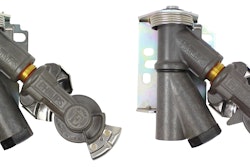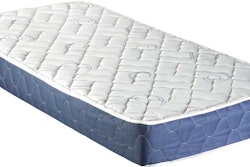The following comes from the August 2018 issue of Truck Parts & Service.

Any industry filled with family-owned, small businesses is familiar with mergers and acquisitions (M&A). It’s the nature of the business.
Unlike corporate America, where retirements are announced with break room chocolate cake and a gold watch, retirements in the small business community are newsworthy events. A business owner exiting his operation is a big deal and, if a successor for the business is not apparent, the uncertain future of a company can draw interest from all angles.
The independent aftermarket has witnessed this phenomenon a lot in recent years, with a multitude of long-time business owners reaching retirement age, selling their companies and exiting the industry.
Those familiar with the aftermarket’s M&A landscape believe more transactions are on the horizon. Business is good; prices are better. For business owners pondering an exit, industry experts believe now is a good time to take the plunge.
“I think if you are considering exiting now or waiting to get started [exiting] in 2020, go ahead and go for it now,” says Bill Wade, partner at Wade & Partners. “I think pricing right now is nearing a peak.”
Wade and Tom Marx, founder and partner at Hart Marx Advisors, note three key reasons for the strong selling conditions currently found in the aftermarket.
The most obvious is demographics. The independent aftermarket community is aging. More than 68 percent of responders to a 2016 Truck Parts & Service reader survey identified as 51 years old or older. The industry’s ownership is believed to be even older. With so many business owners heading toward retirement and so many sons and daughters heading to other industries, the aftermarket is going to be lacking capable leadership.
“A multi-generational business can be a great asset for a family, but the family has to be committed to it,” says Marx.
Another positive for business owners weighing an exit sale are favorable purchasing conditions for buyers. Current interest rates are low and investors are showing interest in the aftermarket. Money is available for companies who want to grow.
Wade says business owners hunting for the best time to sell would be hard-pressed to find a better time than now. Not every business is going to earn top dollar, he says, but any business put up for sale is going to draw interest. “There are buyers out there.”
There’s also the major advantage that is today’s economy. Businesses everywhere are making money and the aftermarket is no exception. MacKay & Company projections show the U.S aftermarket growing from $29.5 billion last year to $30.4 billion in 2018. Wade says the industry looks even stronger this year, and both he and Marx say when it comes to a sale, it’s always best to act while the iron is hot.
“We know things are going well now. We don’t know what’s going to happen in 2020 and beyond,” says Wade.
“The fundamentals of the economy continue to be strong and there are indicators that show this could continue for another one to three years,” says Marx. “I’ve said the last two years: I think there is no better time to sell a business than now.”
To return to the August 2018 cover story on buying and selling a business in the aftermarket, please CLICK HERE.












